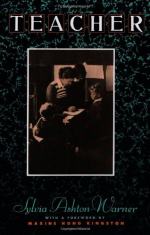
|
| Name: _________________________ | Period: ___________________ |
This test consists of 15 multiple choice questions and 5 short answer questions.
Multiple Choice Questions
1. How long were Ashton-Warner's seven-year-old students able to write?
(a) Three page stories.
(b) Full page stories.
(c) Ten sentences.
(d) Two or three paragraphs.
2. From where, according to Ashton-Warner, did most New Zealand children develop a "mass mind"?
(a) Australia.
(b) Britain.
(c) White New Zealanders.
(d) America.
3. Which student's parents fought frequently and violently at night?
(a) Seven.
(b) Puki.
(c) Rangi.
(d) Mohi.
4. At what time did the students turn to the new words during the "intake period"?
(a) 10:30 a.m.
(b) 11 a.m.
(c) 11:30 a.m.
(d) 10 a.m.
5. In what country did the volunteer describe teaching villagers how to read and write their own names?
(a) Libya.
(b) Morocco.
(c) Algeria.
(d) Egypt.
6. What educational thinker was quoted at the beginning of "Organic Writing"?
(a) Rousseau.
(b) Horace Mann.
(c) John Dewey.
(d) C.E. Beebe.
7. What did the students do with their cards after they were handed out?
(a) They read the words silently to themselves.
(b) They paired up with other students and taught each other the words.
(c) They wrote stories using the words.
(d) They read the words to the teacher.
8. To what natural phenomenon does the term "Golden Section" refer?
(a) Leaf patterns.
(b) Animal growth.
(c) Plant growth.
(d) Wave patterns.
9. What composer was NOT mentioned among the list Ashton-Warner used in her classroom?
(a) Beethoven.
(b) Mozart.
(c) Chopin.
(d) Grieg.
10. What did the students do if they ran out of time to write their stories in the allotted time?
(a) They finished them in the afternoon.
(b) They finished them the next day.
(c) They extended the writing period.
(d) They finished them at home.
11. Which student stumbled on the words "Come," "look," and "and"?
(a) Seven.
(b) Rangi.
(c) Gay.
(d) Matawhero.
12. How many fancy-dress costumes did Ashton-Warner own?
(a) One hundred.
(b) Fifty.
(c) Eighty.
(d) Seventy.
13. What activity was NOT included under the 2:10-3 p.m. time slot under "Daily Rhythm"?
(a) Standard Vocabulary.
(b) Standard Reading.
(c) Creative Writing.
(d) Supplementary Reading.
14. To what children's classic did Ashton-Warner refer when writing about books not read in her classroom?
(a) Alice in Wonderland.
(b) Peter Pan.
(c) Treasure Island.
(d) Winnie the Pooh.
15. What did Ashton-Warner call the most "comely word" in the language?
(a) Peace.
(b) Rest.
(c) Love.
(d) Serenity.
Short Answer Questions
1. In what season was the story of the Little Red Hen told?
2. What "univited insect" was NOT seen in the classroom?
3. What emotion/activity was NOT listed under the "Daily Rhythm" section of Ashton-Warner's daily schedule?
4. What interesting word did Brian use to describe a bus in his story?
5. What size were the cards Ashton-Warner used for the key vocabulary words?
|
This section contains 409 words (approx. 2 pages at 300 words per page) |

|




